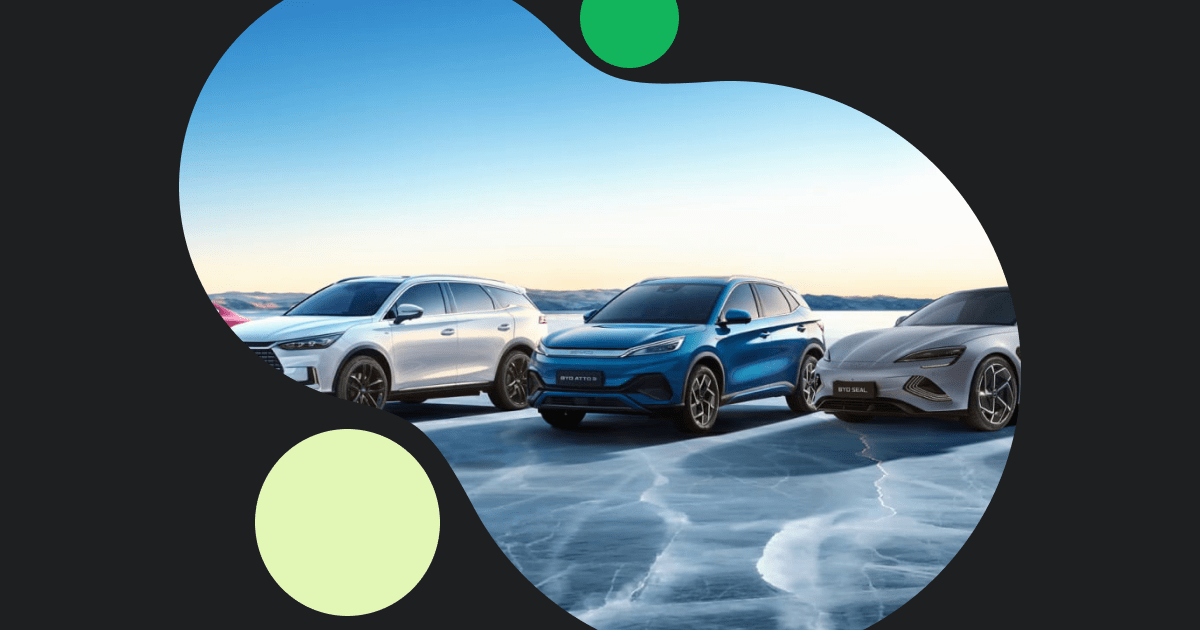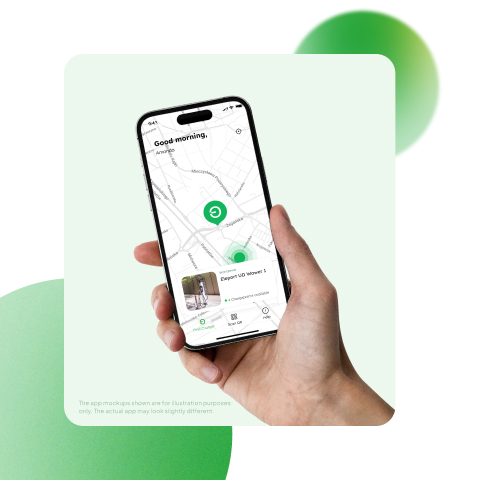On the brochure, it says that the EV charging speed is 350kW, but at the charger, you are seeing much less. Is the charger broken? Or something else is happening here?
The electric cars get better with lower prices, increased range, and higher charging capabilities. In the meantime, the charging infrastructure is not standing still, and such operators as Eleport are opening more and more high power charging stations (HPDC). But when the winter comes, some notice a change in behaviour of the charging process.
You have done everything that is covered in Eleport’s EV driving guide, but for some reason, the charging is slower. Is the charger broken? Is something wrong with the car? Maybe the Mercury is in a retrograde?
Where’s the power?
There are cases when car manufacturers in their press releases state charging stats at a given charger power, example give, at 350kW charger the Hyundai Ioniq 5 can charge 10-80% in 18 minutes, but they do not mention the actual car’s maximum charge power. In this case, Hyundai Ioniq 5 can charge at a maximum of 263kW with the average charge power of 205kW. The car can charge at the charger with a higher power than its stated maximum, but that does not mean that the car will get more power.
Not all new cars have the capability to charge with 200kW, 300kW, or other headline catching power. Take for example, the new and popular Renault 5. Its peak charging power is 100kW, but that drops as the charge level of the battery increases. This happens because the battery management system, or BMS is protecting the battery. For older cars, the scene is even more diverse. 10 years ago, the industry standard for the chargers and the cars was 50kW of charging power.

Another technical reason for power limit is the EV’s battery architecture. Most of the cars are what we call 400V (400 volts) packs, but an increasing number of EVs are 800V. Modern chargers are built to handle both, but the maximum output power can be limited by voltage. Charger that states that the maximum power is, for example, 360 kW, might give half as much, or in this case 180kW, to an EV with a 400V architecture.
The car is not always the one limiting the power, but the charger can be as well. Charge point operators such as Eleport are using smart chargers, e.g., Kempower, that can dynamically share power between plugs if more than one car is charging at the moment. Sometimes there might be a situation where, for a moment, a charger is limiting output to the car because the charging bay is at its capacity. If there is such a situation, you can see it on the charger’s screen, where an appropriate icon is displayed.
Sometimes the reason for power limit is a different one – the charger is smartly integrated into the local grid, which prioritizes the building next to the charger and does not currently have enough free capacity. For the rarest of occasions, the charger might limit output power if the pins in the plugs get too hot. However, a totally different behaviour can happen when it gets colder.
It all starts at +10°C

The first real cold feeling begins when outside temperature slides below +10°C. It doesn’t have to become freezing to say that it is cold outside. Just like us humans, our cars perform best when the outside temperature is not cold. When it comes to charging, there are multiple factors such as battery size, battery capacity, maximum allowed charging power from the car and the charger, etc., that play a role on how fast the charging process will happen.
One of the major factors is temperature. The ideal temperature to achieve the best performance of your EV be it driving or charging, is between 20°C and 25°C. However, some manufacturers of EVs, for example, Tesla, deliberately heat up the battery to nearly 50°C for the best charging experience.
Unlike internal combustion cars that won’t start in extreme weather, EVs experience a drop in range they can go on a charge and extended charging time. When charging on a slow charger (home or public AC charger), the changes might not be noticeable at all, even if the temperature goes down to -20°C. The biggest difference in charging behaviour would be noticeable on chargers where we expect fast charging, especially on HPDC chargers.
To be clear, your car is fine. So is the charger. All credible manufacturers of electric cars and chargers promise a wide range of working conditions. Be it scorching hot or freezing cold, both the car and the charger would perform.
Why does EV charging slow down? Due to the physical and chemical properties of the car’s battery, the charging process at colder temperatures might become longer. That is done to protect the battery’s health. In extreme cases, this slowdown has been called as “coldgating”. A lot of EV drivers instantly blame the charger, and some even think that the car is broken. The fact that the outside temperature affects the charging process is shocking in the first days of driving an electric car in a colder climate. This is the answer in nearly all cases on why is my EV charger not charging at full speed.
How to know when the car thinks it’s cold? Some cars warn the driver about cold climate in general, but other cars indicate that the battery is cold. For example, Tesla adds a snowflake next to the range near battery symbol to indicate when the temperature is low enough to impact range and charging. Other ways to notice the cold are that the regenerative braking feels not as strong when using the strongest mode or 1-pedal driving.
Getting the heat in the EV charging speed

Nearly all modern cars, when the charging process is initiated, start heating the battery to the optimal charging temperature. When this happens, the first moments of the chargin,g most of the energy is streamlined to increase battery’s temperature, and you might notice that after just a few minute,s the EV charges like it did when the outside temperature was much warmer. However, you can help the charging process before arriving at the charger.
When you know that you will be charging the car, set your car’s inbuilt navigation to the charger of your choice. Most cars will start preconditioning the car to the optimal temperature, but in some cars, you must manually enable this function. The best performance would be if this would be initiated 30 minutes before arrival. Driving by itself, nor climate inside the car, does not contribute much to the temperature of the battery.
Older cars typically did not have preconditioning available, but some have reported that “yo-yo” driving (fast acceleration and deceleration) helps to raise the temperature. This is not something we recommend, especially in winter condition when driving conditions are known to be more challenging.
The time needed for the preconditioning might vary on various aspects, including, but not limited to, the temperature difference between the desired and actual temperature of the battery, battery’s chemistry, and system’s efficiency. Note that preconditioning of the battery is useful all around the year. If the car can heat the battery, most likely it can cool it down too.
The longer the trip, the easier it gets

The biggest fear about charging time would be on longer trips, but as it turns out, longer trips with multiple charging stops are more beneficial for the charging time. The reason is rather simple: the car’s battery does not lose as much heat during driving, even in winter conditions. Therefore, after the first charging stop, the next charging should behave very similar to the summer charging sessions, even if the preconditioning has not been enabled.
With the public charging network becoming increasingly dense with HPDCs from Eleport and other operators, the route and charging planning even in winter has become comfortable to not to get yourself into a “coldgate”.
Charging Tips & Tricks in winter

- Set the preconditioning preferably 30 minutes before arriving at a charger.
- Plan with spare time as the charging process, even with preconditioning, might not be as rapid as expected.
- Use apps that show real-time charger availability to avoid waiting in the cold.
- If possible, keep the car in a heated or at least covered place.
- Don’t let your battery get too low when cold. Rare EVs have struggled to accept power or even to start charging when the temperatures are extreme.
- Preheat the car before starting the journey, especially when plugged in. It might not affect the battery much, but it would make the trip more pleasant.
- Use scheduled charging if possible, as this prepares the car for optimal driving conditions when you are ready for your drive.
- Keep the charging port clean and dry, as accumulated ice, snow, water, moisture might intervene with initiating the charging process.
Frequently Asked Questions – Winter EV Charging
1. Why does my EV charge slower in winter?
Temperature is a major contributor to the charging process, and colder temperature negatively impacts charging speed. The cars battery management system limits charging speed to protect EV’s battery health.
2. Can I charge my EV in snowy or freezing conditions?
Yes. EVs and chargers are designed to work safely in all weather conditions. Do keep the snow and ice away from the inside of the charge port before plugging in to ensure a smooth experience.
3. Does the cold damage the battery?
No. The negative effects (reduced range and charge speed) is temporary and will be back to normal when the temperatures are higher. It would benefit if you follow good habits – avoid deep discharge, precondition before charging, and keep the car in a warm or sheltered environment.
4. The car is warm, and I drove at least 20 min. Why does it still not charge as fast?
Driving by itself, nor climate inside the car, does not contribute much to the temperature of the battery. To ensure best charging experience, you must enable preconditioning of the battery, preferably at least 30 minutes before arriving at the charger.
5. If I keep the climate on in the car while charging, would that speed the charging process?
No. Electric cars behave differently during the charging process when the cabin needs to be heated. Some take the needed power from the charger, others from the battery. In the first case, it might seem that the car is charging with a higher power, while on the second cas,e you might even increase charge time as the power for heating is draining the battery.





